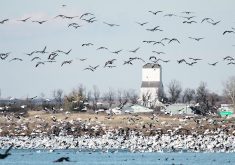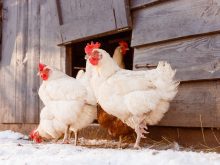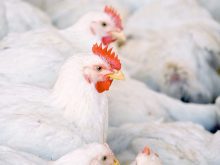REUTERS — The U.S. Center for Disease Control issued a health alert April 5 warning clinicians, state health departments and the public about a case of avian influenza in a person who had contact with dairy cows presumed to be infected with the virus.
The farm worker from Texas was reported to be infected on April 1, making it the second case of the H5N1 strain of avian influenza, commonly known as bird flu, identified in a person in the United States.
It follows a 2022 case in Colorado, and comes as the virus is spreading to new mammals, including dairy cattle for the first time.
Read Also

Chinese, Indian tariffs take toll on pea prices
The disruption of pea exports from Canada’s largest customers will likely result in slow pea exports for the remainder of the crop year.
To prevent infection from the virus, the CDC recommends the use of personal protective equipment, testing, antiviral treatment, patient investigations and monitoring of persons exposed to sick or dead, wild and domesticated animals and livestock that may have been infected with the virus.
Earlier in April, the CDC said the infection does not change the risk assessment for the American general public from H5N1 bird flu, which it considers to be low. The Texas patient’s only symptom was eye inflammation, according to the state’s health department.
Texas Agriculture Commissioner Sid Miller said migratory waterfowl are to blame for widening avian-flu outbreaks in Texas cows and poultry. A positive test at a Texas egg farm led egg producer Cal-Maine to cull 1.6 million laying hens, the company said April 2.
This is the first time such a major outbreak at a commercial poultry facility has occurred in Texas, Miller said.
The U.S. Department of Agriculture first reported on March 25 that a cow and milk from two dairies in Texas tested positive for bird flu, along with milk from two dairies in Kansas. The agency later confirmed positive tests in additional dairy herds in Texas, New Mexico, Michigan and Idaho.
The strain of the virus found in the subsequent states is very similar to the strain confirmed in the initial cases in Texas and Kansas that appear to have been introduced by wild birds, the USDA said.
“We’re ready for the ducks to head north to their nesting grounds,” Miller said. “We think within a week or a little longer they’ll all be out of Texas and we’ll be out of the woods.”
USDA said transmission of the disease between cattle cannot be ruled out.
Richard Webby, a virologist at St. Jude Children’s Research Hospital in Memphis, said testing for flu in cattle is not routine and it was important to establish the connection between the sickness in cows, ducks and cats on farms.
People will now look for similar events in Europe and Asia, said Webby, director of the WHO Collaborating Center for Studies on the Ecology of Influenza in Animals and Birds.
The Texas outbreak may have started about a month ago when a mysterious illness affected about 40 per cent of the state’s dairy herds, Miller said. He now suspects it was bird flu, though officials did not know it at the time and can’t confirm it because the animals recovered.
“We were testing for every cattle disease we could think of and then somebody said, ‘what are all these dead birds doing around the dairies?’” Miller said.















